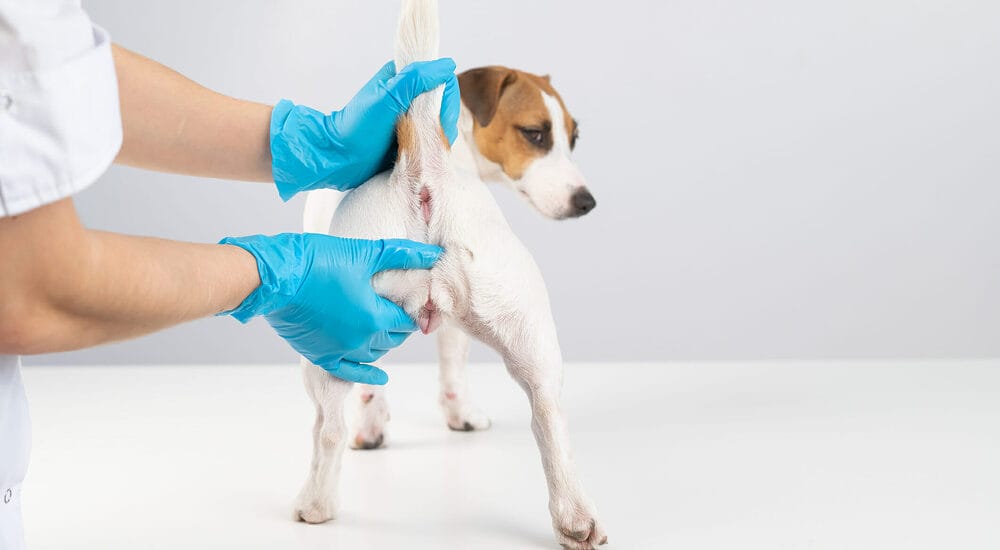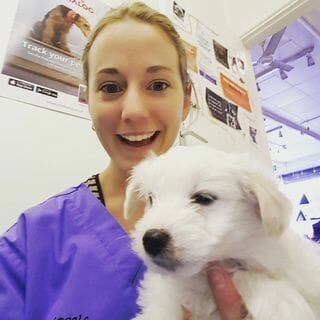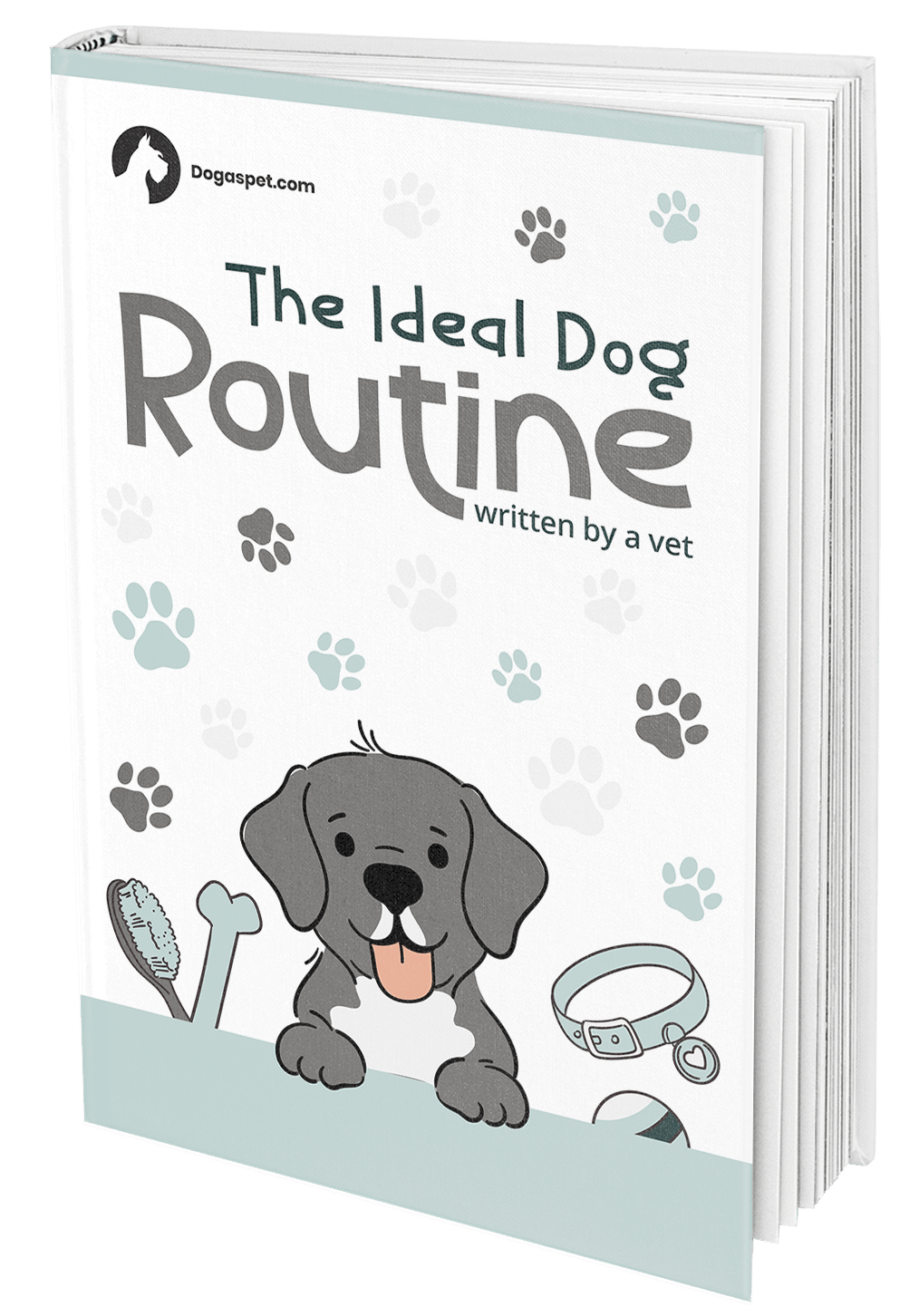
When you have a dog that suffers from ongoing anal gland issues, you’ll want to know what you can do to help them. While some dogs will inevitably be more prone to developing issues than others, even these dogs can be helped with certain lifestyle and diet changes.
As well as regularly emptying your dog’s anal glands, you might be interested to hear there are other things that can help too. Let’s take a closer look at what can be done to maintain good anal gland health and how to prevent future infections and impactions.
Table of contents
Who should express their dog’s anal glands?
Not everyone needs to express their dog’s glands and if your dog doesn’t have any problems, it is best to leave them as they are. Indeed, unnecessarily emptying glands can potentially create issues that were never there in the first place.
If your dog starts to show signs of anal gland impaction, then they will need help with emptying their glands. These signs include:
- Bottom scooting or dragging
- Trying to chew or lick their back end
- Swelling or tenderness around the bottom
- A fishy odour coming from the back end
- Quickly looking behind them at their back end, as if something is bothering
What is the best way to empty anal glands?
Emptying glands doesn’t have to be complicated but it is something that requires experience and can seem daunting the first time you try. With a few attempts, you should soon get used to how to do it and you’ll be emptying glands like a pro in no time.
Here are the steps to follow:
Choose the right spot
Put your dog somewhere that you won’t mind if it gets dirty, and where they cannot move too much. This may be in the bathtub or on a plastic table outside.
Have a partner
Have someone help you hold your dog still. They can also have the job of offering your dog some nice tasty treats.
Find the Anal Glands
Wear gloves and apply lubricant to your finger tips. Gently insert your index finger into the anus, keeping your thumb on the outside. About 1cm inside on the left hand side, you should feel a smooth gland, about the size of a grape.
For those who are left-handed, they would insert their thumb and keep their index finger on the outside of the dog’s body.
Squeeze your thumb to your finger
With firm pressure, squeeze your thumb to your finger. You should feel the gland emptying and you should see the secretions coming out. Collect this onto a tissue to keep your dog’s coat clean.
Repeat the process for the other gland
Repeat the process to empty the right anal gland. This time, you insert your right thumb and keep your right index finger on the outside of your dog’s body.
What if I can’t empty my dog’s anal glands?
Do not panic if you can’t get the hang of emptying anal glands or if you don’t want to try. Any vet or vet tech will be happy to empty your dog’s glands for you. The fee for this is generally quite low; about $10-20.
If you’re unsure on technique or struggle to fully empty the glands, your local vet clinic will be happy to demonstrate what they do, next time you bring your pet in.

Foods to help dog express glands
Feeding the right diet can go a long way toward a dog’s glands emptying naturally. This is because when a dog passes a firm stool, they should pass a little bit of anal gland secretion alongside it. If a dog is on an inappropriate diet or one that doesn’t suit them, they may have soft or loose stool, so the glands never empty as they should.
When glands don’t naturally empty, they soon become impacted. This causes discomfort and can even lead to anal gland infections and abscesses.
Fiber for dogs’ anal glands
The best food for anal gland health will contain adequate moisture and fiber. These foods should contain a mixture of soluble and insoluble fiber, to ensure the gut is passing food along as it should and to increase the weight and bulk of the stool.
Bulkier stools press more on the anal glands as they pass out of the anus, meaning they are squeezed and emptied.
Some good options for high-fiber foods that we can give our dogs include canned pumpkin, bran cereals, and sweet potato. For those prone to diarrhea, we can supplement foods like this daily.
As well as supplementing our dog’s diet, we could give a fiber supplement such as Protexin Pro-Fiber. This is an example of both a high-fiber supplement and a probiotic, which promotes good gut health and solid stools.
Best dog food for anal gland problems
Given how common anal gland problems are, many food companies are now designing foods to support anal gland health. For owners, this is a convenient way of ensuring their dog’s anal glands are supported on a daily basis.
Examples of such foods include Hill’s Digestive Care i/d, Royal Canin Gastrointestinal, and Purina Digestive Support. These diets are all high in fiber and support gut health, ensuring a bulky stool is passed each day.
Importantly, those pets prone to anal gland issues will sometimes have food allergies. This is often the case for those who also suffer from ongoing ear infections and skin disease. For these dogs, we might consider an elimination diet or a hydrolyzed hypoallergenic diet such as Purina HA or Royal Canin allergenic.
Foods that are bad for dogs with anal gland issues
When your dog has anal gland issues, you want to avoid diarrhea whenever possible. This means steering clear of foods that can cause gut inflammation such as dairy or high-fat foods. Where possible, you shouldn’t give your dog human foods such as takeaways, cake, biscuits, cheese and greasy meats.
For a dog who has food allergies, they could react to a range of allergens and some of the most common for our canines include chicken, beef, dairy, egg, pea, and grains. For these dogs, we’d ideally determine what they react to, which can mean doing an elimination diet and keeping a food diary.
Can food cause anal gland issues in dogs?
Feeding the wrong things can create anal gland issues or worsen any pre-existing anal gland problems. This is because the wrong diet can mean your dog does not pass a bulky poo each day. When poos are soft or sloppy, the glands can become impacted within a matter of days.
As diet plays such a big role in anal gland health, you should be on the ball when it comes to your dog’s food if they’ve ever needed help emptying their anal glands in the past.
How else can I help my dog’s anal glands?
As well as focusing on diet, there are a number of other boxes we can tick. Taking a holistic approach and focusing on areas other than just food will ensure the best success going forward.
Keeping your dog slim
Maintaining the ideal Body Condition Score is important for so many reasons. A lean dog enjoys not just a longer life but also a better quality of life. Excess fat near the anus means the glands are less easily expressed and much more prone to becoming blocked.
If your dog is overweight and struggling with their glands, slimming them down should go a long way toward improving things. If you’re having trouble doing this, consider a weight loss diet such as Royal Canin Satiety, which helps dogs feel fuller for longer and even increases their metabolic rate.
Consistent exercise
The more a dog moves about, the more their digestive tract will continue to move along. Those who lead sedentary lives and who spend more time laying down than standing up can have a longer gut transit time and won’t pass stool as often as they should.
Even dogs who are older or not active by nature should be brought out a few times a day or a brisk stroll. Not only is this so they can get some fresh air and socialize, but the more they move about, the better for their digestive health.
Good hydration
Ensuring our pets are taking in enough water helps to prevent constipation. This may mean offering a wet diet rather than dry food. Other options include adding water to meals and providing things like ice cubes and vegetables with high moisture content.
A daily, solid poo
Passing stool each day helps to prevent the anal glands from becoming blocked. When a dog goes too long without passing stool, the anal glands can become overly full. Similarly, sloppy poo can pass through the anus without exerting enough pressure to empty the glands.
You can help ensure your dog passes a solid poo every day by feeding a high-quality diet rich in fiber, keeping them well hydrated, ensuring they stay slim, and exercising them regularly.
Conclusion
Anal gland issues in dogs can be managed naturally with a multi-pronged approach that includes a species-appropriate diet, keeping your dog slim and active, and ensuring they stay hydrated. By following these tips, you can help keep their glands healthy and avoid the discomfort associated with blocked or impacted anal glands.
If your dog’s glands do become blocked, we recommend expressing them at the vet. Regardless, addressing your dog’s diet and lifestyle should also be part of the solution going forward.

